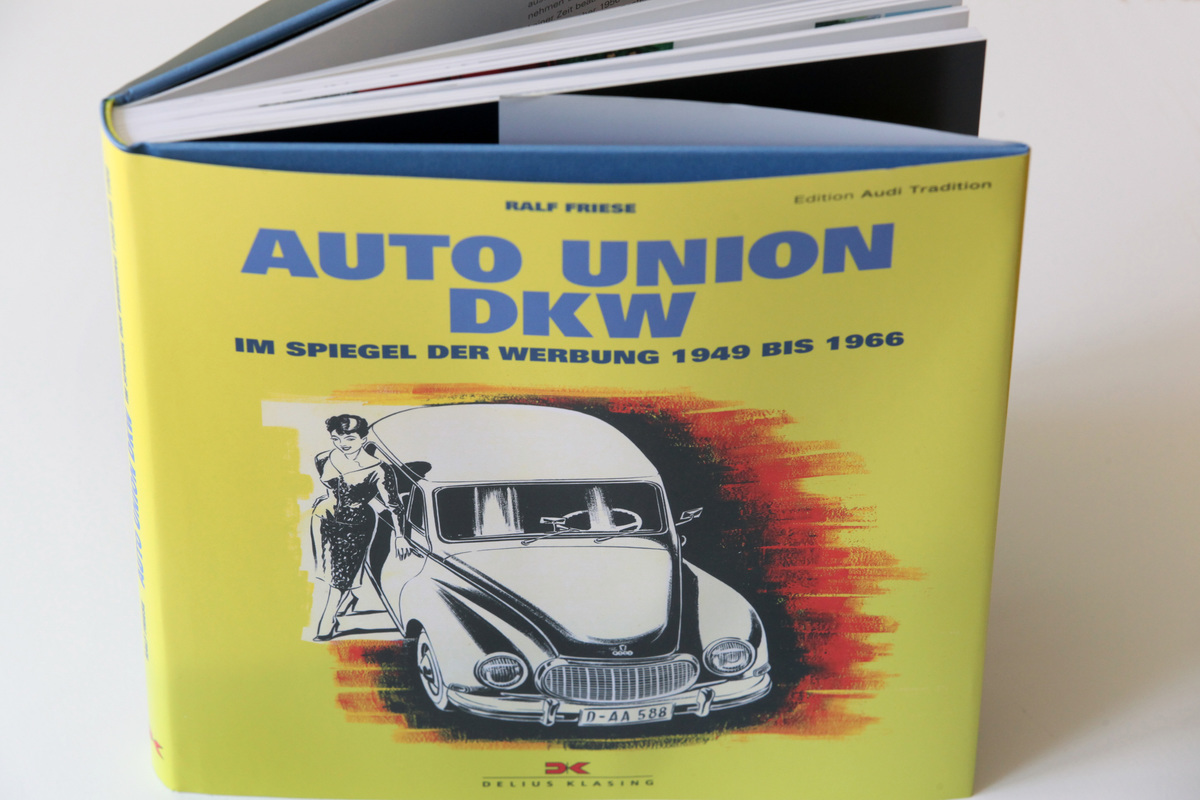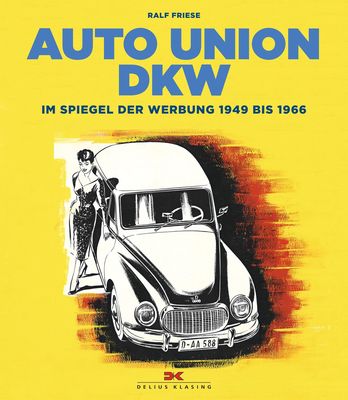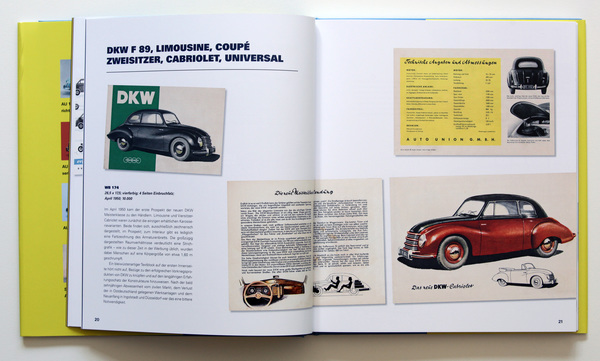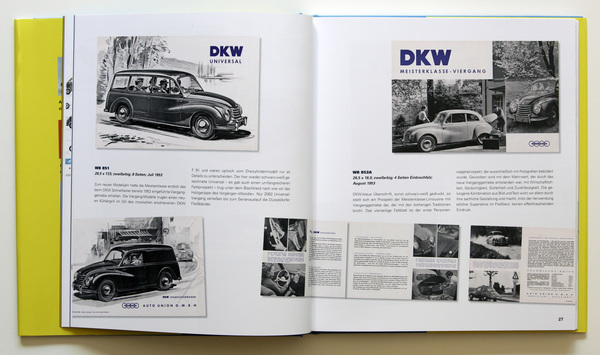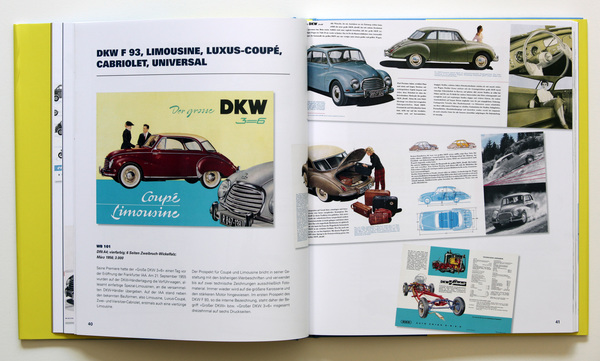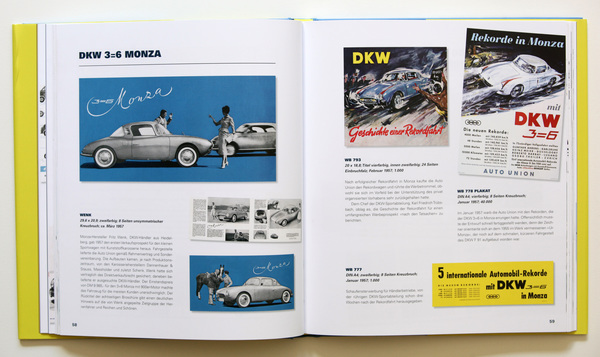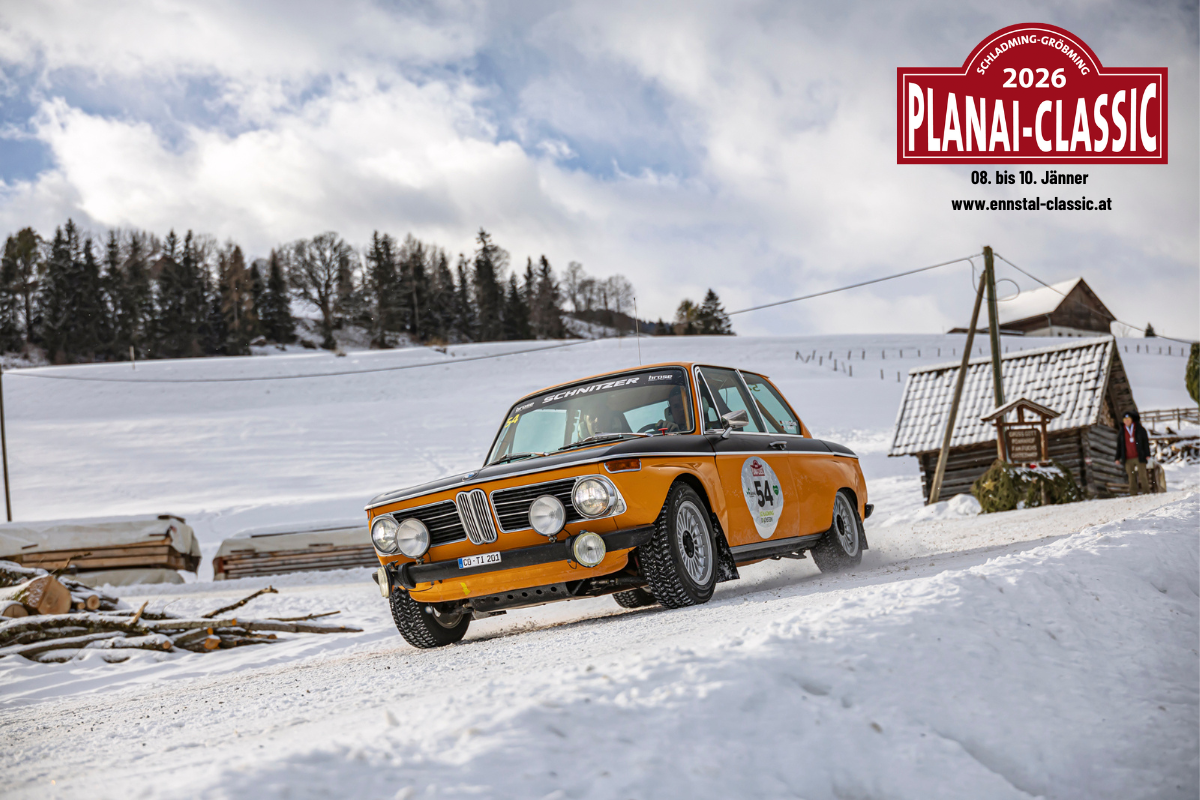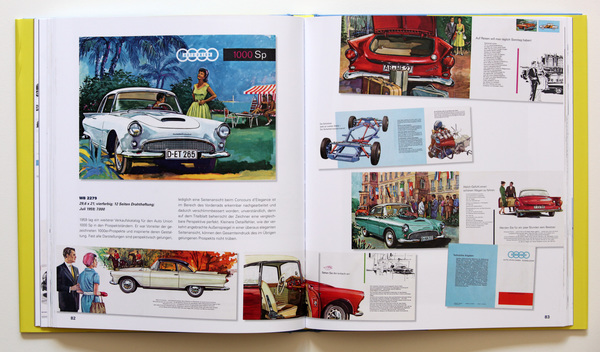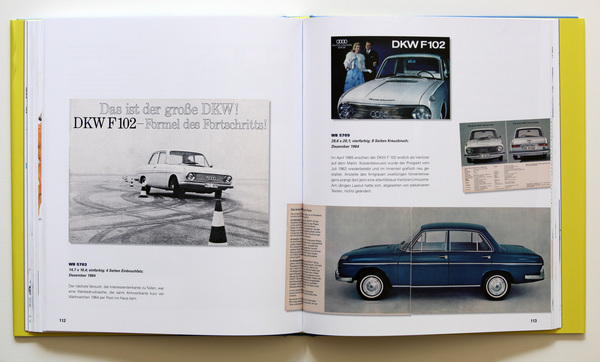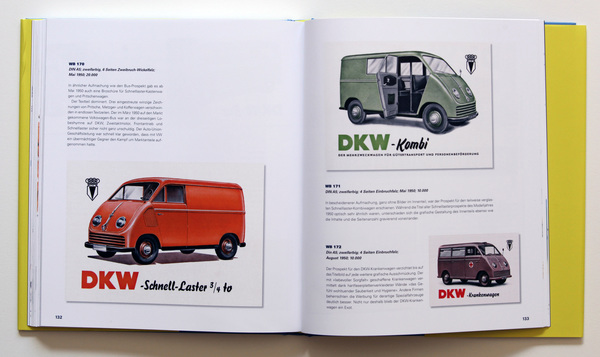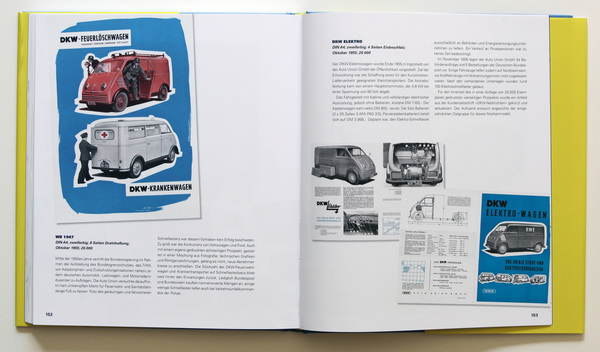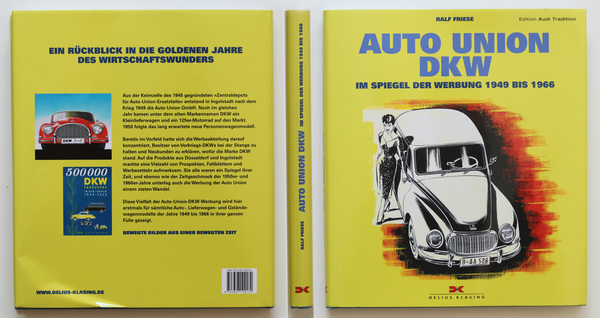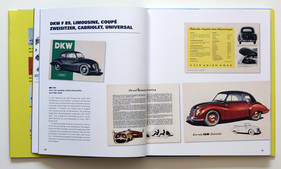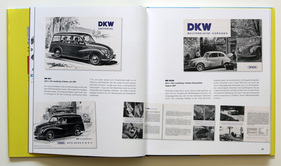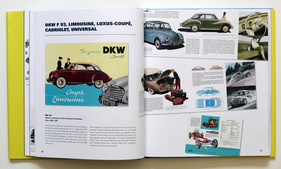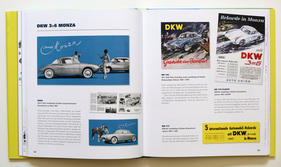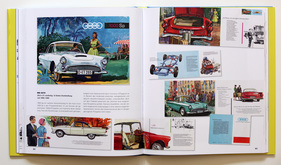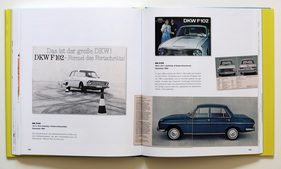"Advertising is necessary." The newly founded Auto Union in Ingolstadt was well aware of this. The marketing specialist Carl Hahn, who had a decisive influence on the development and establishment of the advertising department, had a formative effect on DKW's sales strategies, particularly in the early 1950s.
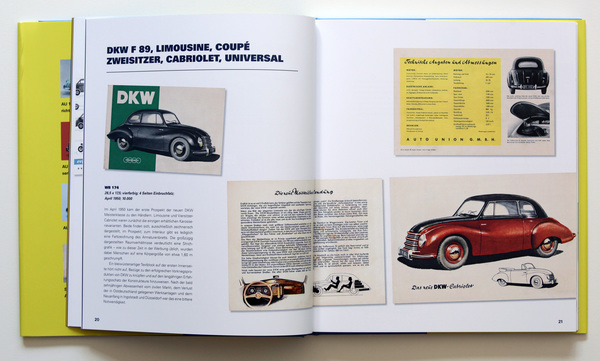
With the book "Auto Union DKW - Im Spiegel der Werbung von 1949 bis 1966", DKW post-war expert and Audi Tradition historian Ralf Friese takes a look at the richly illustrated and artistic advertising of Auto Union from the first two decades.
Collecting brochures
How times change. Collecting brochures is even cheaper than collecting stamps. But it will soon be a thing of the past. At best, the conceptually and creatively formative marketing documents may still be available as downloads. How different was it in the last century? Car dealerships, dealerships and garages decorated their sparse showrooms and sales counters with colorful brochures, folders, price lists and customer advertising campaigns. The sales contract was often enough compared with the brochure/price list combination at the salesperson's desk to determine the budget limits.
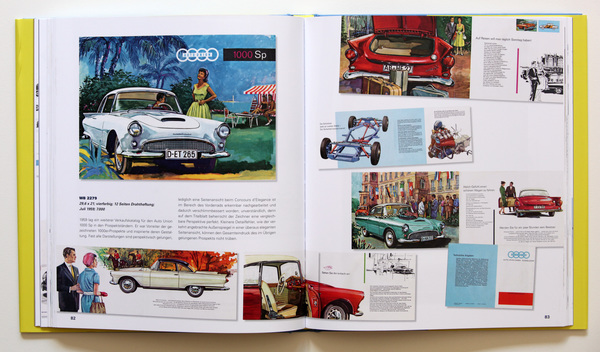
Today, on the other hand, there is the configurator, where you can see on the screen what you can get for your money. Online, you are just as close to the brand of your choice as you are to chatting with your children. Printed press kits have long since become obsolete. Brochures, as an expression of the zeitgeist and self-image of a brand and its products, are cultural assets of everyday life and consumption.
Fireworks
In his 150-page illustrated book, author Ralf Friese shows how Auto Union advertised its two-stroke products, which were sold under the brand name DKW, from 1949 to 1966. He drew almost exclusively on his own collection of brochures on the subject of DKW automobiles. Motorcycles appear at best in combination with the four-wheeled vehicles.
The book is divided into the categories of the Auto Union model range: passenger cars, off-road vehicles and delivery vans and is sorted chronologically. The passenger cars make up about 2/3 of the volume.
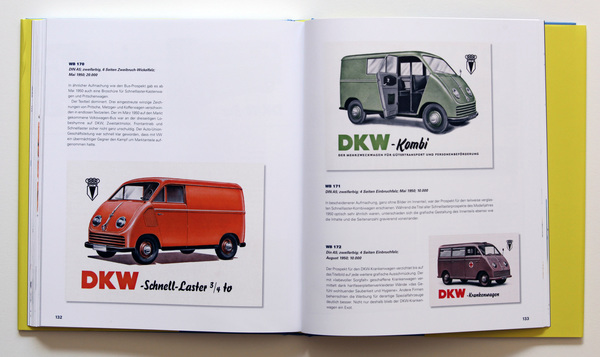
In most cases, the presentation of an individual brochure is limited to an illustration of the cover, with subsequent pages rarely shown. Each means of communication is accompanied by a short, descriptive text. Things always get exciting when Friese draws on his specialist knowledge and draws the reader's attention to the special features of the brochure. This ranges from simple references to graphic differences to a type history that makes the design of the corresponding brochure plausible from a different perspective. In this way, you not only browse and read through the DKW product portfolio, but also through the company history and excursions into some background information.
Attention despite thriftiness
Auto Union began after the war with empty pockets. All that remained of the Saxon heritage were the ideas of the big DKW and the motorcycle for the little man. Auto Union put both on wheels under merciful conditions in Ingolstadt and Düsseldorf. Not without developing the Schnellaster, the first genuine new design in Germany after the lost war, which could be measured against the needs of West German reality.
Tight budgets and corresponding future prospects forced Auto Union, which suffered from cost-intensive production, to be economical with marketing and sales costs. This is reflected in the advertising brochures. Small formats, page sizes and illustrations reflect Auto Union's conditions on the one hand and the needs to be aroused on the customer side.
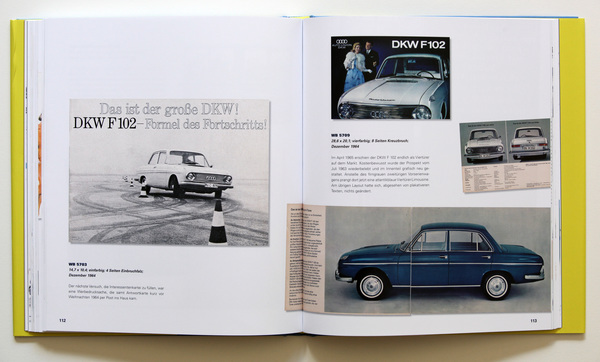
This journey into contemporary history becomes interesting if you look at it comparatively and focus on the intentions of the Auto Union marketing department. Early brochures are still characterized by the style and style of the dark past, while the economic boom is more colourful and lively.
Passenger cars are prestigious, off-road vehicles are always ready for action and delivery vans are always practical. The flair is based on the standards of the time. America was great and thus the role model for the design. With the 1000 Sp, even down to the product design.
The Auto Union and the two-stroke engine
Before the war, Auto Union offered a product range from the simple two-stroke to the luxurious 8-cylinder. When Auto Union was reborn, modesty was the order of the day. Auto Union relied on two-stroke pragmatism and front-wheel drive technology because it believed it could sell nothing else to its existing clientele, even if more modern designs were in development on the way to series production.
It was a stance that broke the neck of the DKW brand. The continued existence of the company was only possible thanks to the consistent intervention of a few senior employees who, with a lot of money from the coffers of Mercedes and later VW, turned the DKW F 102 into the Audi F 103 with a four-stroke engine. It's all the more astonishing how the mantra of the front-wheel-drive two-stroke engine was chanted at DKW right up to the end. Probably also out of desperation in the face of the overpowering competition - above all the Beetle.
Advertising in the rear-view mirror
Anyone interested in the history of DKW and automobile advertising will be well served by Friese's work. The rigorous, restrained treatment of the subject treats all the advertising measures presented in a largely neutral and equal manner and leads to the above-mentioned outline of cultural history. In this case, a certain proximity to the corporate history of the Auto Union as a background does no harm at all.
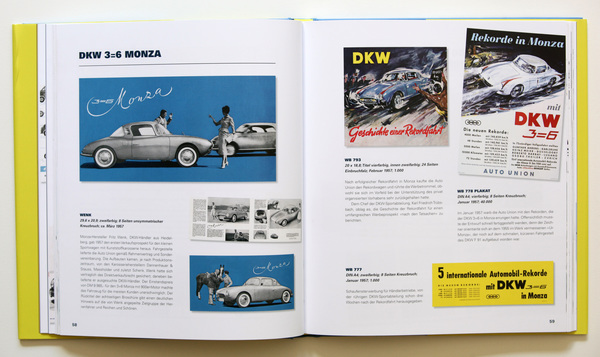
And even if the concept of cultural or everyday history is mentioned several times here, the author is not concerned with this. He shows the wealth of brochures here in all their breadth and abundance, but without going into any depth of commentary or even analysis. This is not surprising in view of the volume, but it is regrettable: Anyone familiar with Ralf Friese and his eloquence knows what you have to do without here. Nevertheless, for € 29.90, the reader receives a very well-made reappraisal of a chapter in automotive history that is otherwise treated rather neglected. And with a documentary balance that at least allows a little subjectivity to shine through in the texts. After all, Friese is a DKW man. With body and soul and with his tongue.
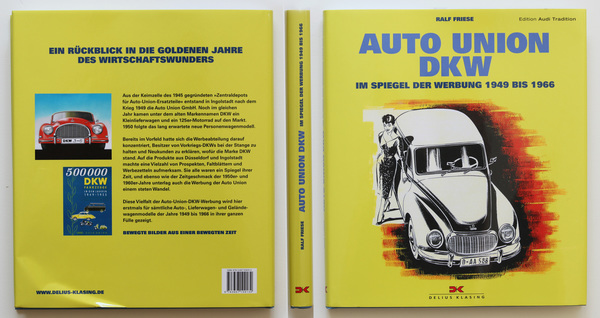
Bibliographical information
- Title: Auto Union DKW in the mirror of advertising from 1949 to 1966
- Author: Ralf Friese
- Publisher: Delius Klasing Verlag
- Edition: 1st edition 2017
- Format: 238 x 272 mm, hardcover with dust jacket
- Scope: 160 pages, 339 color illustrations
- ISBN: 978-3-667-10913-2
- Price: € 29,90
- Order/buy: Online at amazon.de, online at Delius Klasing Verlag or in a well-stocked bookshop
